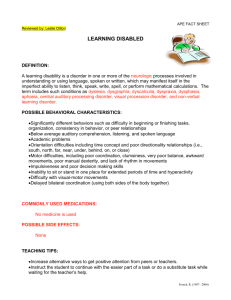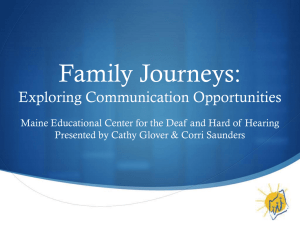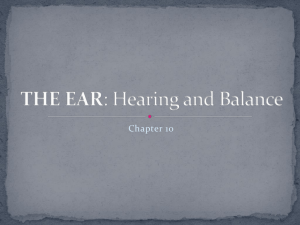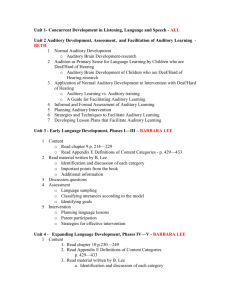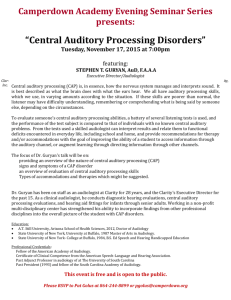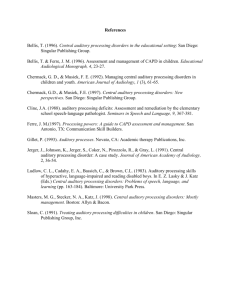Handout: Sign Language as a Bridge to Spoken Language
advertisement
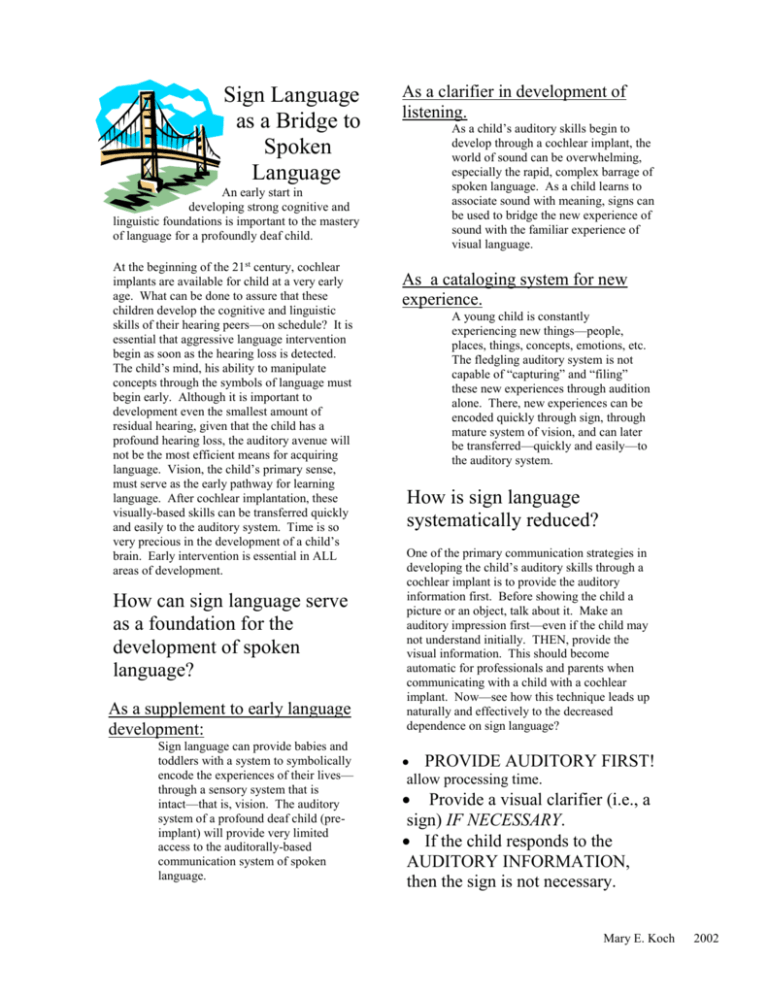
Sign Language as a Bridge to Spoken Language An early start in developing strong cognitive and linguistic foundations is important to the mastery of language for a profoundly deaf child. At the beginning of the 21st century, cochlear implants are available for child at a very early age. What can be done to assure that these children develop the cognitive and linguistic skills of their hearing peers—on schedule? It is essential that aggressive language intervention begin as soon as the hearing loss is detected. The child’s mind, his ability to manipulate concepts through the symbols of language must begin early. Although it is important to development even the smallest amount of residual hearing, given that the child has a profound hearing loss, the auditory avenue will not be the most efficient means for acquiring language. Vision, the child’s primary sense, must serve as the early pathway for learning language. After cochlear implantation, these visually-based skills can be transferred quickly and easily to the auditory system. Time is so very precious in the development of a child’s brain. Early intervention is essential in ALL areas of development. How can sign language serve as a foundation for the development of spoken language? As a supplement to early language development: Sign language can provide babies and toddlers with a system to symbolically encode the experiences of their lives— through a sensory system that is intact—that is, vision. The auditory system of a profound deaf child (preimplant) will provide very limited access to the auditorally-based communication system of spoken language. As a clarifier in development of listening. As a child’s auditory skills begin to develop through a cochlear implant, the world of sound can be overwhelming, especially the rapid, complex barrage of spoken language. As a child learns to associate sound with meaning, signs can be used to bridge the new experience of sound with the familiar experience of visual language. As a cataloging system for new experience. A young child is constantly experiencing new things—people, places, things, concepts, emotions, etc. The fledgling auditory system is not capable of “capturing” and “filing” these new experiences through audition alone. There, new experiences can be encoded quickly through sign, through mature system of vision, and can later be transferred—quickly and easily—to the auditory system. How is sign language systematically reduced? One of the primary communication strategies in developing the child’s auditory skills through a cochlear implant is to provide the auditory information first. Before showing the child a picture or an object, talk about it. Make an auditory impression first—even if the child may not understand initially. THEN, provide the visual information. This should become automatic for professionals and parents when communicating with a child with a cochlear implant. Now—see how this technique leads up naturally and effectively to the decreased dependence on sign language? PROVIDE AUDITORY FIRST! allow processing time. Provide a visual clarifier (i.e., a sign) IF NECESSARY. If the child responds to the AUDITORY INFORMATION, then the sign is not necessary. Mary E. Koch 2002





